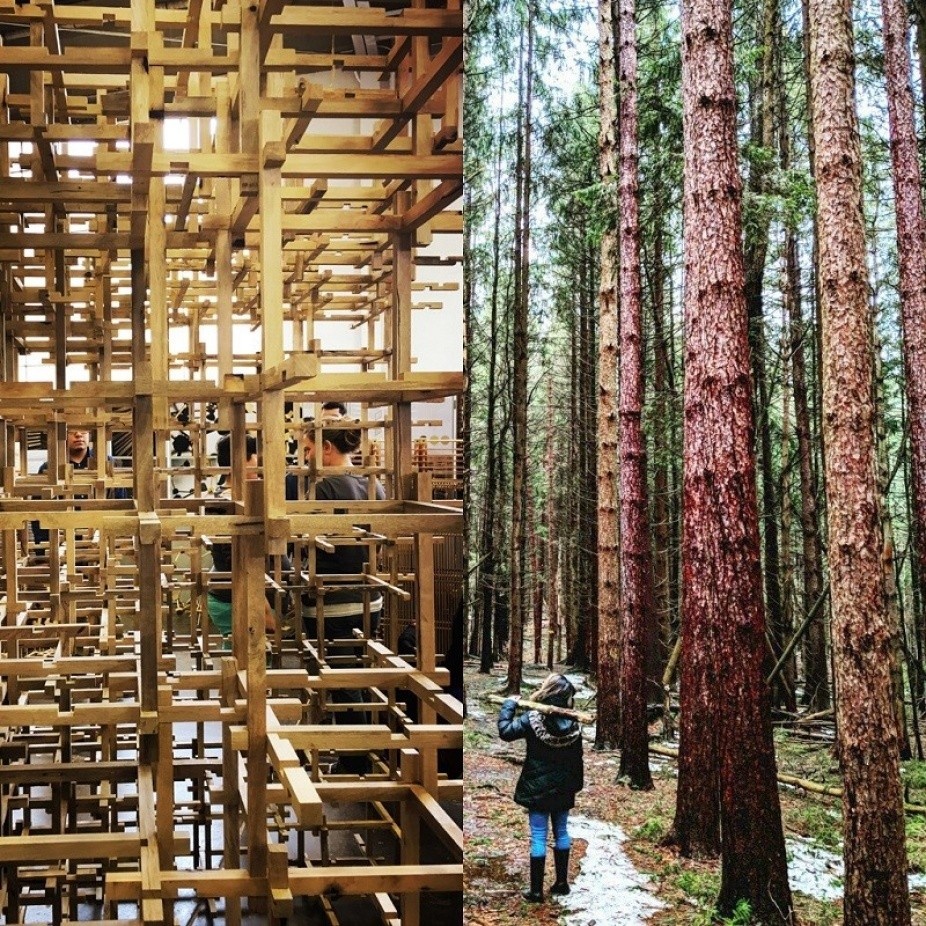Cages/Logging

Student work from Miguel Guitart's "Cages" studio, and the forest where Christopher Romano's students harvested trees to get closer to the material's source. Photo courtesy of Miguel Guitart and Christopher Romano
Cages is the result of a research architectural studio at the University at Buffalo Architecture Department that explored qualities of material boundaries and enclosing conditions that relate structure and skin, establishing critical connections between the natural and the artificial in the material experience. Through the production of wooden structures with considerations of matter, fabrication, form and emotion, the research explored operations of transverse physical and visual relationships that promoted critical thinking in terms of active perception and spatial construction between an inside and an outside. The proposals had no specific site, but were required to contemplate a basic program based on a one-person space for inspiration and isolation. Cages was an attempt to embrace the connections between wood, craft, space and emotion.
Logging shows a research architectural seminar at the University at Buffalo Architecture Department that examined material origins and the ethics of material consumption as it pertains to wood construction. The research enacted the process of how a tree becomes a log and then timber, wood prepared for use in building or carpentry. Most of the technological innovations surrounding the logging industry have been attempts to standardize the material. That is, to kill the plant so it will behave and perform in a predictable and consistent manner. As a counterpoint to this historical trend, the exploration aimed to embrace the living, unpredictable, and irregular features inherent to all trees, and design experiments that attempt to capitalize on these eccentric qualities. The research was an attempt to rekindle the omnipresent relationship between people and wood.
Cages/Logging composes two parallel narratives that explore the processes by which nature becomes a material space charged with intellectual emotion. From the exploration that compels us to search for the natural sources that will provide us with our building materials, to the actual manufacturing of the skin that protects us from that same environment, Cages/Logging offers a unique vision of the privilege and responsibility that we have in the design of our spaces.
Curated by Miguel Guitart and Christopher Romano.